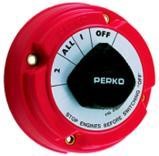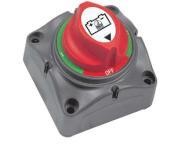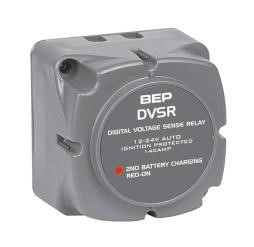Battery Switch
|
|
Battery Switch Safety: What to Avoid and What to Use❌ Avoid OFF–1–Both–2 Type SwitchesWe do not recommend using an OFF–1–Both–2 type battery switch (as shown). This type of switch relies on manual input from the skipper, and forgetting to isolate the start battery can result in it being drained overnight. Even more critically, switching while the engine is running can be dangerous. If the internal contactors fail to make proper contact, it can destroy your alternator diodes. ✅ Use Individual Battery SwitchesA better choice is to use individual battery switches (as shown on the left). These provide clearer control and reduce the risk of accidental battery drain or electrical damage.
|
Battery Bank Separation & VSR Recommendation
If you're running both a start battery and a house battery, we strongly recommend separating the two systems. This means:
- Using separate bus bars
- Installing a Voltage Sensitive Relay (VSR)
- Using a diode battery islolator ( you will see a 0.6v drop)
Why Use a VSR?
The DVSR (Digital Voltage Sensing Relay) allows charging of two independent battery banks from a single charging source.
Here’s how it works:
- When the start battery reaches a charged voltage level, the DVSR engages, allowing the house battery to begin charging.
- When charging stops and voltage drops, the DVSR disengages, isolating the two batteries.
- Dual sensing enables two-way charging, monitoring both battery banks.
Key Advantages
- During engine startup, the house battery is isolated from the voltage-hungry starting process.
- This protects sensitive electronics (which are typically powered by the house battery) from damaging voltage spikes.
- The system operates automatically, reducing the risk of human error and improving overall reliability.
|
|
More information can be found at the BEP website including installation hints: http://www.bepmarine.com/product-mainmenu-0/product-714/digital-voltage-sensing-relay-dvsr There are several options in set up in respect of which battery is charged first, please ensure you have the correct one for your needs.
|



